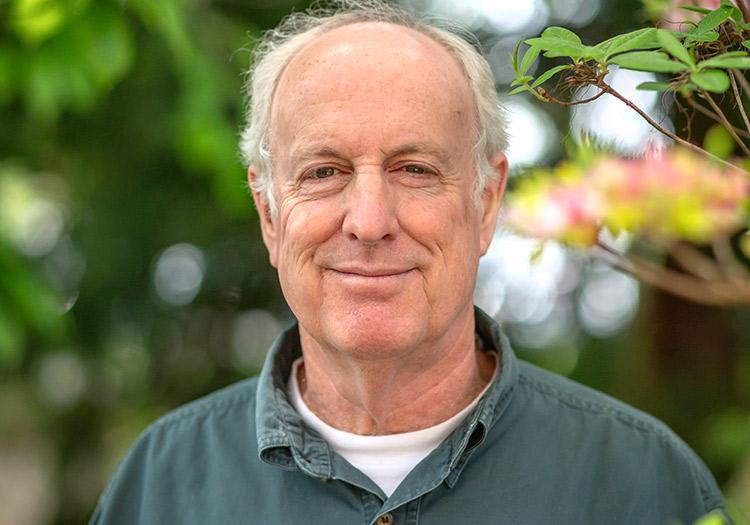‘What’s your favorite bird?” is likely a more popular question than “what’s your favorite bug,” but we can’t have one without the other.
Doug Tallamy, an entomologist, author, and professor at the University of Delaware, encourages homeowners to think about the role our yards play in the food chain that sustains birds and wildlife. The immense decline of the bird population by one-third over the past 50 years has opened eyes to its urgency.
With that in mind, Mr. Tallamy started an effort called Homegrown National Park, described on its website as “a bottom-up call-to-action to restore habitat where we live and work, and to a lesser extent where we farm and graze, extending national parks to our yards and communities.” The East End is a perfect place to start.
East Hampton Star: What inspired you to start Homegrown National Park?
Doug Tallamy: I ran across a statistic that we had 40 million acres of lawn across the United States. And I thought, how big is that? What if we cut that area of lawn in half? That would give us 20 million acres, and we could do restoration on 20 million acres right at home. That’s big enough to create a new ‘national park’ that we’ll do at home. I started adding up all the major national parks together and it’s actually less than 20 million acres.
Why are native trees and shrubs important for birds?
People get it that birds eat insects, but they don’t understand how many. It takes 6,000 to 9,000 caterpillars to make one clutch of chickadees. Chickadees weigh one-third of an ounce — four pennies worth of bird. So where are the caterpillars going to come from? They come from native plants like oak trees. And if you don’t have those trees in your yard, there isn’t enough food to support one clutch. And we don’t want one — we want lots of birds, and lots of types of birds. So you need a lot of insects in your yard or you can’t have breeding birds. And they need to be in your yard because the birds only forage about 50 meters from the nest. They’re not flying five miles down the road to the nearest woodlot. If we landscape in a way that removes all the insects, you’ve gotten rid of breeding birds, and this is why we have three billion fewer breeding birds than we had 50 years ago.
Can you explain why all plants aren’t the same for birds and wildlife?
That’s a critical part of it because some people think all plants are the same. People think plants are decorations and it’s just how pretty they are. Because of host-plant specialization, it turns out that 90 percent of the insects that eat plants are host-plant specialists, so they need the right plant to survive. We don’t have those insects when we grow plants originating from Asia or South America. There are huge differences in native plants’ ability to support insect populations. There are tools to help you to search for native plants to your county, including the native plant finder on the National Wildlife Federation website. I know it’s a dirty word these days, but there is room for compromise. We’ve done research that shows you can have up to 30 percent of your woody plant biomass as nonnative without destroying the local food web. So that’s good. You can have your ginkgo tree. You can have your hostas. You can have your marigolds — as long as it doesn’t dominate and is a companion to natives.
It’s empowering to think that our own yards can contribute to biodiversity. What are the criteria to join Homegrown National Park?
Even just a commitment to make changes — because these things take time. . . . It’s not that you have to finish restoring your property before you can join Homegrown National Park. It’s just to recognize this is the direction you’re going in and make that commitment. It’s free to register your property on the map. You register the amount of area that you’re actually going to be a good steward of. So maybe you reduce the area of lawn, maybe plant an oak tree. Maybe you put an aster in a flowerpot. Whatever you do, that area gets recorded on the map and your piece of the county lights up, and the goal is to get the whole country to light up. There’s a competitive aspect to it: You can look at the color coding of your state and see what percentage of your state has joined Homegrown National Park. We are an important component of conservation that has to start happening at home. We’re not separate from nature; there is no other place out there where we’re going to do conservation.
Have homegrown National Park members told you of remarkable wildlife sightings?
Oh yeah, I get emails like that every single day. This is working. What we don’t have is a staff to be able to actually collate all this data. The enthusiasm over the idea is much bigger than the staff that can handle it at this point. So, yes, people are reporting all the time this works and you know, I’ll give you a stat from my own yard. Our yard was mowed for hay before we moved there; it was part of a farm — so almost nothing there — but we put in plants and I’ve been taking a picture of every species of moth that is now making a living on our property. I’m up to 1,199 species of just moths, and they’re the basis of that food web. Those are the caterpillars that the birds are eating. And the birds are here because we planted the plants. So it works — it works.

